A football field’s dimensions might seem straightforward at first glance, but there’s more to these carefully measured spaces than meets the eye. Whether you’re watching an NFL game or planning to build a field, understanding these measurements is crucial for players, coaches, and fans alike.
Interactive Football Field Dimensions
Hover over the dots to see dimensions
Why Are Football Field Dimensions Important?
The precise measurements of a football field directly impact gameplay and strategy. When teams plan their plays, every yard matters – from the distance needed for a first down to the space required for a successful field goal. These dimensions influence everything from offensive plays to defensive formations.
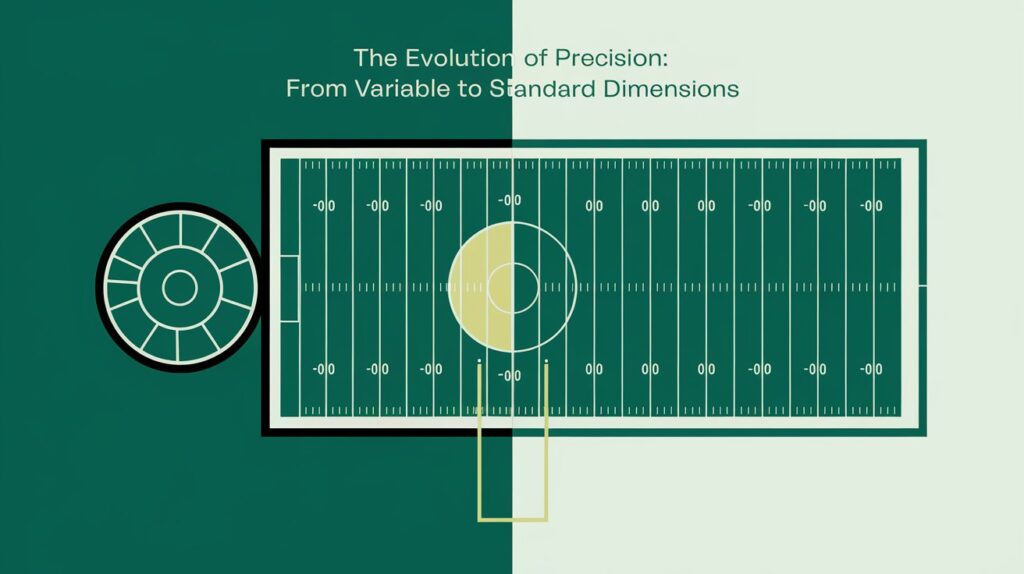
Standardized field dimensions ensure fair competition across all levels of play. Whether it's a high school game in Texas or a professional match in New York, teams can practice and compete knowing the playing surface will be consistent. This standardization has become especially important as football has evolved into a game of inches where precise measurements can determine the outcome of crucial plays.
Interactive Discussion
with John & Kapela
The Evolution of Football Field Dimensions
The journey to today's standardized football field measurements spans over a century. In the early days of the sport, fields varied significantly in size and shape, often adapting to whatever space was available. Local teams would play on fields that could be anywhere from 90 to 120 yards long, making it challenging to establish consistent rules and strategies.
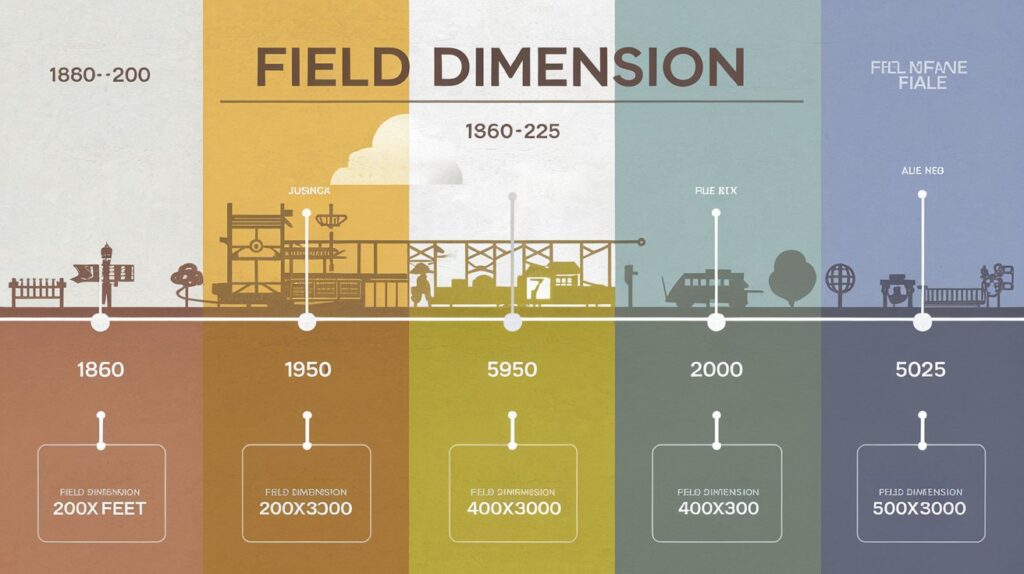
As the sport gained popularity and organization became more structured, the need for standardization became apparent. The establishment of official leagues like the NFL and NCAA helped drive the development of uniform field dimensions that we know today. These organizations worked to create guidelines that would ensure fair play while maximizing the excitement and strategy of the game.
| Time Period | Field Dimensions | Notable Changes |
|---|---|---|
| 1860s | 90-120 yards x 50-70 yards | No standardization, variable sizes |
| 1870s | 100-140 yards x 60 yards | First goal posts introduced |
| 1880s | 110 yards x 55 yards | First yard line markers added |
| 1890s | 100 yards + end zones | Introduction of 10-yard end zones |
| 1912 | 100 yards x 53⅓ yards | Width standardized, hash marks added |
| 1920s | 120 yards total length | NFL standardization implemented |
| 1930s | 120 yards x 53⅓ yards | Hash mark placement refined |
| 1940s | 120 yards x 53⅓ yards | Goal post height standardized to 10 feet |
| 1950s | 120 yards x 53⅓ yards | Modern measurement techniques introduced |
| 1960s-Present | 120 yards x 53⅓ yards | Digital measurement integration |
Must Visit : How To Measure Room Dimensions For Furniture Layout?
Historical Changes in Field Dimensions (Timeline)

The evolution of football field dimensions represents a fascinating journey through the sport's history. Here's a chronological breakdown of significant changes that shaped today's standardized field measurements:
1860s - Early Beginnings
- Fields varied dramatically in size
- No standardized dimensions existed
- Lengths ranged from 100 to 140 yards
- Widths could vary from 50 to 70 yards
1870s - First Standardization Attempts
- First attempts to establish uniform field sizes
- Introduction of goal posts
- End zones were not yet established
- Field markings were minimal and inconsistent
1880s - Moving Toward Consistency
- Fields began trending toward 110 yards in length
- First introduction of yard line markers
- Goal posts placed on the goal line
- Width standardization began around 55 yards
1890s - Major Reforms
- Introduction of the 100-yard playing field
- First implementation of 10-yard end zones
- Establishment of five-yard line markings
- Standardization of sideline boundaries
1912 - Significant Changes
- Goal posts moved from goal line to end line
- Field width officially set at 53 1/3 yards
- Introduction of hash marks
- Standardized field markings implemented
1920s - NFL Era Begins
- Professional league standardization
- Uniform field dimension requirements
- Introduction of more detailed yard markers
- Consistent end zone depth established
1930s - 1940s
- Refinement of hash mark placement
- Implementation of uniform turf standards
- Standardization of goal post dimensions
- Introduction of field lighting requirements
1950s - 1960s
- Modern field measurement techniques introduced
- Artificial turf surfaces emerge
- Enhanced drainage system requirements
- Precise marking specifications established
1970s - 1990s
- Goal post design modifications
- Advanced field maintenance standards
- Implementation of safety zones
- Refined sideline area requirements
2000s - Present
- Digital measurement integration
- Enhanced field safety standards
- Improved surface technology requirements
- Precise environmental control specifications
Notable Changes That Shaped Modern Dimensions:
- Transition from variable field sizes to standard measurements
- Evolution of end zone depths from non-existent to 10 yards
- Movement of goal posts from goal line to end line
- Standardization of hash mark placement
- Implementation of precise width measurements
- Development of comprehensive marking systems
Impact on Modern Game:
These historical changes have directly influenced:
- Modern play calling strategies
- Field goal kicking techniques
- Offensive formation development
- Defensive positioning options
- Player safety considerations
- Game pace and scoring opportunities
Check this out : How Large Is Earth In Kilometers And Miles? Explore Earth’s Dimension
Changing Standards Over Time
The evolution of football field dimensions reflects the sport's development from a casual pastime to a professional spectacle. Early fields often lacked proper markings and had irregular dimensions, which could vary significantly between venues. The introduction of standardized measurements came gradually, with each major change carefully considered for its impact on gameplay and spectator experience.
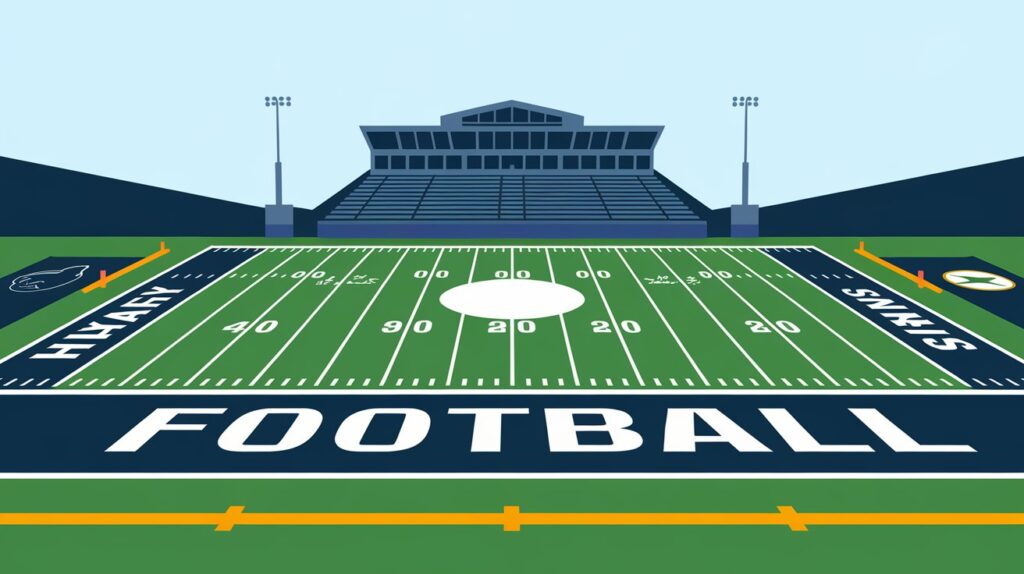
Modern fields incorporate precise measurements that account for everything from player safety to broadcast requirements. The addition of proper drainage systems, specific turf requirements, and exact placement of hash marks has transformed basic playing fields into sophisticated sporting venues designed for optimal performance in various weather conditions.
From Local Variability to Formal Rules
The transition from varied local standards to formal football field dimensions marked a pivotal moment in the sport's history. Early games often took place on makeshift fields where dimensions could vary drastically depending on available space. This inconsistency made it difficult to compare team performances and establish universal strategies.
The push for standardization came as football grew from local competitions to regional and national events. Organizations like the NFL and NCAA recognized that consistent field dimensions were essential for fair competition and professional development of the sport. They established detailed regulations covering everything from the width of sidelines to the placement of goalposts.
| Field Type | Length (Yards) | Width (Yards) |
|---|---|---|
| Early Local Fields | 90 - 120 | 50 - 60 |
| High School Fields | 100 | 50 - 53 |
| NCAA Fields | 120 | 53 1/3 |
| NFL Fields | 120 | 53 1/3 |
| Canadian Football Fields | 110 | 65 |
| End Zones (NFL/NCAA) | 10 | - |
| End Zones (Canadian) | 20 | - |
| Goal Post Height | 10 | - |
| Hash Mark Spacing | 18.5 | - |
| Sideline Width | 4 inches | - |
General Dimensions of a Football Field
A regulation NFL field measures exactly 120 yards in total length and 53 1/3 yards (or 160 feet) in width. The main playing surface spans 100 yards from goal line to goal line, with two 10-yard end zones completing the total length. This creates a total area of approximately 57,600 square feet of playing space.
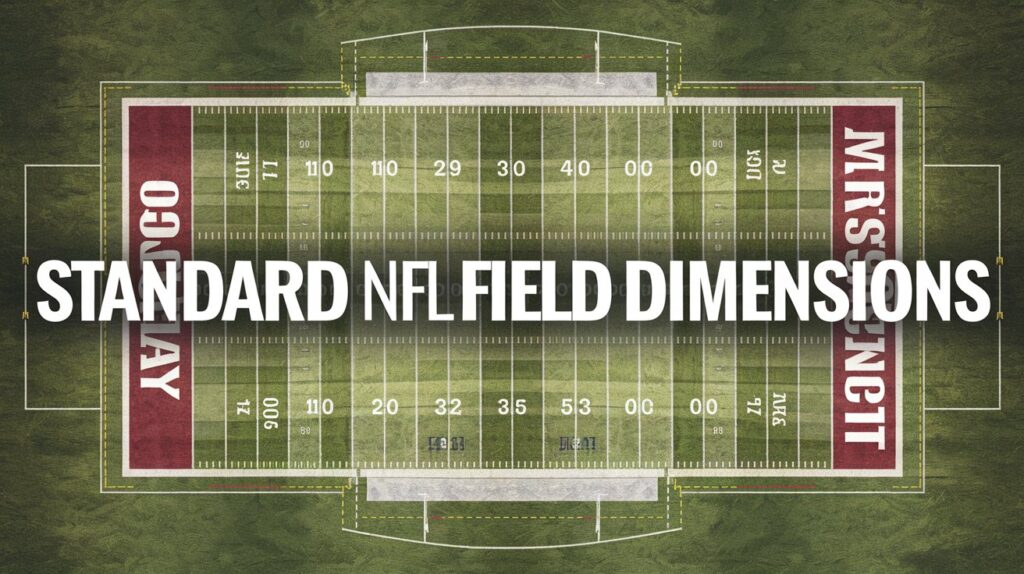
The field is meticulously marked with yard lines every 5 yards, and hash marks indicate single-yard increments. These markings are crucial for tracking progress during games and determining first downs. The placement of these lines must be precise, as they affect everything from play calling to penalty enforcement.
Official Size for Professional Games
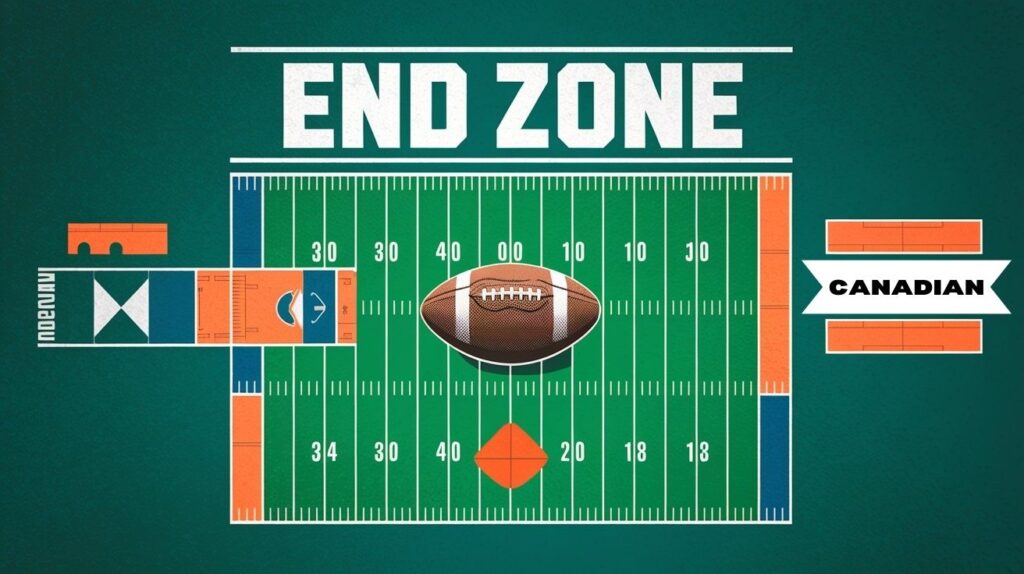
Professional football fields must adhere to strict dimensional standards set by the NFL. These specifications ensure consistency across all professional venues and maintain the integrity of the game. The field's measurements are precise: 100 yards of playing field plus two 10-yard end zones, creating the total 120-yard length.
Here's a detailed breakdown of professional field measurements:
Football Field Dimensions
| Component | Measurement |
|---|---|
| Total Length | 120 yards |
| Playing Field | 100 yards |
| End Zone Depth | 10 yards each |
| Width | 53 1/3 yards |
| Goalpost Height | 10 feet |
| Hash Mark Spacing | 18 feet, 6 inches |
Standard Measurements of Football Field: Yard Lines and Zones
Understanding the layout of yard lines and zones is crucial for following the game. The field is divided into twenty segments by yard lines marked every 5 yards, with additional hash marks providing single-yard measurements. The 50-yard line marks the center of the field, with numbers decreasing toward each end zone.
Every aspect of these measurements serves a specific purpose in gameplay. The hash marks help officials spot the ball consistently, while yard lines assist teams in gauging distances for first downs and field goals. During overtime or in cases of penalties, these precise measurements become even more crucial for fair play enforcement.
Must Explore : How Long Is 400 Meters? 18 Things That Are 400 Meters Long
Types of Football Fields and Their Specific Dimensions
Different levels of play may have slightly different field dimensions. While NFL and NCAA fields maintain standard measurements, high school fields might vary slightly, particularly in width (ranging from 50 to 53 yards). Canadian football introduces even more variation, with fields measuring 110 yards long and 65 yards wide, plus deeper end zones of 20 yards.
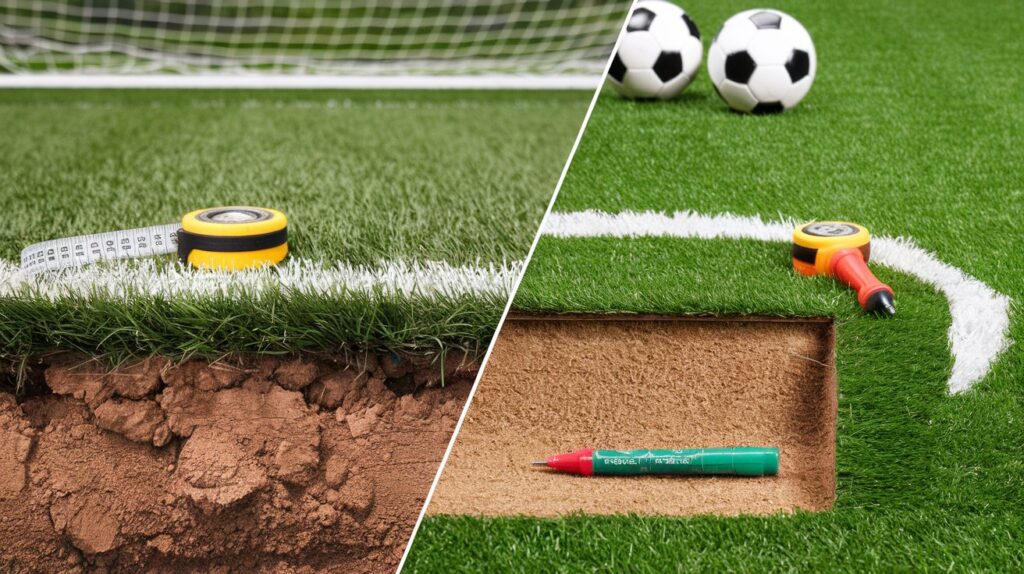
The variations in field dimensions across different levels of play reflect practical considerations and historical development. Despite these differences, all fields maintain the basic structure and marking system that makes football immediately recognizable, whether it's being played on natural grass or artificial turf.
Football Field Dimensions Comparison
NFL
NCAA
High School
Key Differences
- Hash marks placement varies significantly between levels
- High school fields may have slightly narrower width
- End zone depth remains consistent across all levels
- College hash marks are positioned wider than NFL marks
- High school hash marks are the widest among all levels
Field Components and Their Dimensions
The complexity of a football field extends beyond its basic length and width. Each component serves a specific purpose in the game. The sidelines must be 4 inches wide, while the end zone lines span 8 inches. These markings aren't just for show – they help officials make crucial calls during intense gameplay situations.
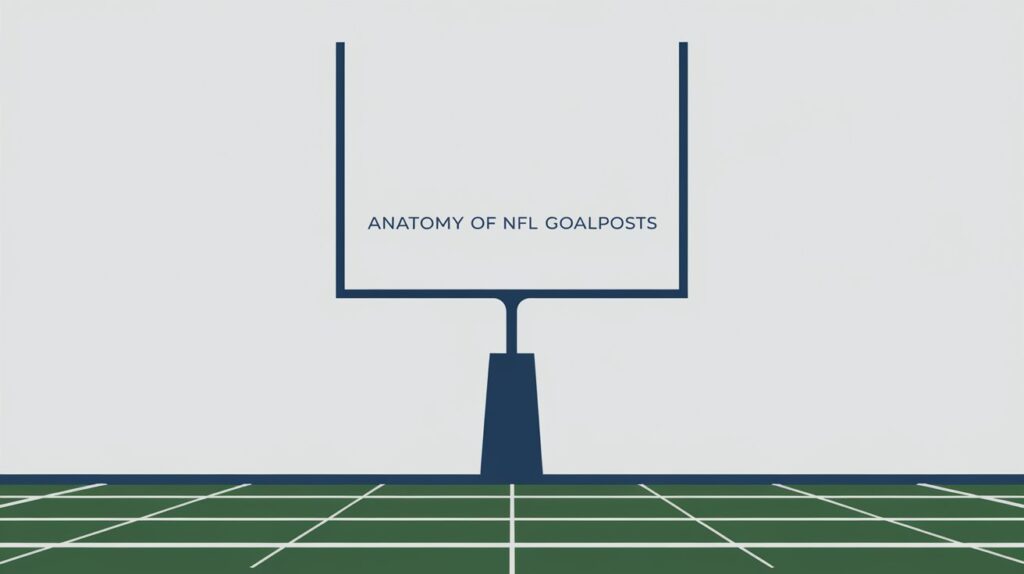
The goalposts represent another crucial element of field architecture. Standing 10 feet high from the ground, they extend upward with uprights spaced exactly 18 feet, 6 inches apart. This precise spacing makes field goal attempts a true test of skill, especially when factoring in challenging weather conditions like wind and rain.
Special Rules Affecting Dimensions
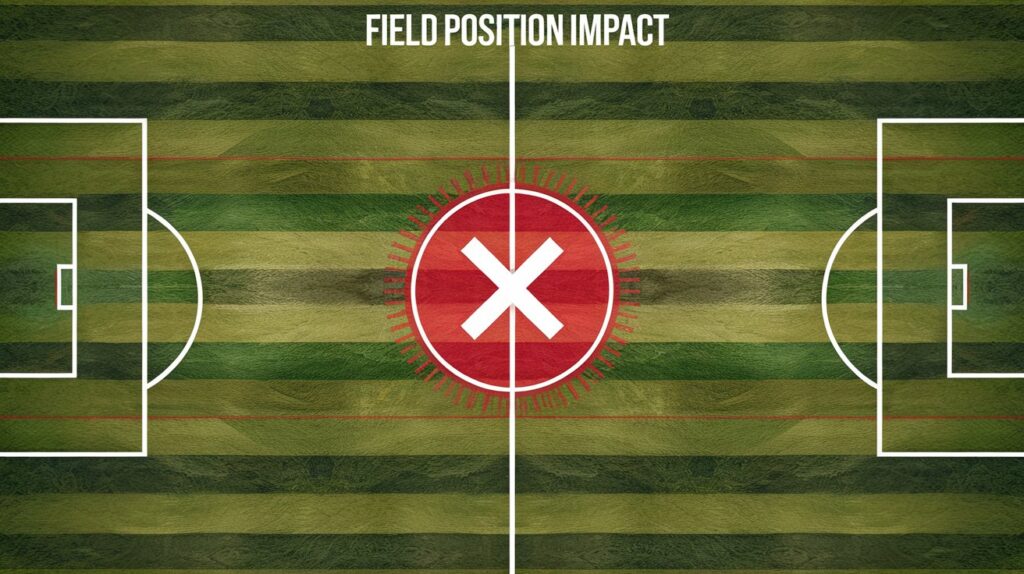
Various game situations can affect how teams utilize the field's dimensions. During kickoffs, teams must position themselves within specific yard markers, while penalties often involve precise measurements that can dramatically change field position. These rules add layers of strategy to how teams approach different game situations.
Special circumstances like overtime may also influence how teams use the field space. The positioning of the ball for overtime possessions follows specific rules, and teams must adapt their strategies based on their starting field position. Understanding these nuances becomes crucial for both offensive plays and defensive plays.
| Rule Type | Impact on Field Dimensions | Example Scenario |
|---|---|---|
| Kickoff Positioning | Teams must align behind specific yard markers. | Kickoff from the 35-yard line. |
| Penalty Yardage | Penalties result in yardage added or subtracted. | 15-yard personal foul penalty. |
| Overtime Rules | Field positioning for overtime possessions varies. | Starting from the opponent's 25-yard line. |
| Two-Point Conversion | Attempted from the 2-yard line. | Touchdown followed by a two-point conversion attempt. |
| Field Goal Attempt | Placement of the ball affects the yardage for attempts. | Ball spotted 7 yards behind the line of scrimmage for a 27-yard attempt. |
| Timeouts | Affects game flow, requiring precise management. | Use timeouts strategically before critical plays. |
| Challenge Flags | Can affect game flow and field usage. | Coach challenges a ruling, stopping play. |
| Injury Timeouts | Can halt the game and affect momentum. | Medical staff checks on an injured player. |
| Sideline Interference | Enforced by marking off yardage from the sideline. | Penalty for team members on the field during play. |
| Weather Conditions | Can influence field setup and play strategy. | Wet conditions affect ball handling and player movement. |
Advanced Field Management
Modern football fields require sophisticated maintenance systems to ensure optimal playing conditions. Proper drainage systems prevent water accumulation during rain or snow, while advanced turf management techniques help the field withstand intense play during extreme heat. These systems are essential for maintaining consistent playing conditions throughout the season.
The evolution of playing surface technology has revolutionized field maintenance. Whether using natural grass or synthetic alternatives, field managers must maintain specific standards for hardness, traction, and uniformity. These factors directly impact player performance and safety during tackles and quick directional changes.
Also Like To Know This : 20 Things That Are 500 Meters Long or Big
Environmental Considerations and Field Design
Field designers must account for various environmental factors when planning football field dimensions. The orientation of the field often considers sun position to minimize glare during games. Additionally, wind patterns can affect everything from passing plays to field goal attempts, making proper field positioning crucial for fair play.
Modern stadiums often incorporate additional features while maintaining regulation dimensions. Buffer zones beyond the sidelines provide safety areas for players, while specialized lighting systems ensure optimal visibility for night games. These considerations help create a safe and enjoyable environment for both players and spectators.
| Environmental Factor | Impact on Field Design | Example Implementation |
|---|---|---|
| Sun Position | Affects field orientation to minimize glare. | Fields oriented north-south. |
| Wind Patterns | Influences passing plays and field goal attempts. | Strategic placement of stands to block wind. |
| Drainage Systems | Prevents water accumulation and maintains playability. | Installed French drains around the field. |
| Turf Type | Impacts player safety and field performance. | Use of synthetic turf for durability. |
| Local Climate | Determines maintenance needs and field type. | Adjustments for extreme heat or cold. |
| Soil Quality | Affects drainage and grass growth. | Soil testing before installation. |
| Wildlife Considerations | Influences pest management strategies. | Use of non-toxic repellents. |
| Water Conservation | Promotes sustainable irrigation practices. | Drip irrigation systems installed. |
| Noise Pollution | Field layout can mitigate noise from nearby traffic. | Strategic placement of sound barriers. |
| Community Engagement | Involves local input in design decisions. | Public forums for community feedback. |
Stadium Architecture and Field Design
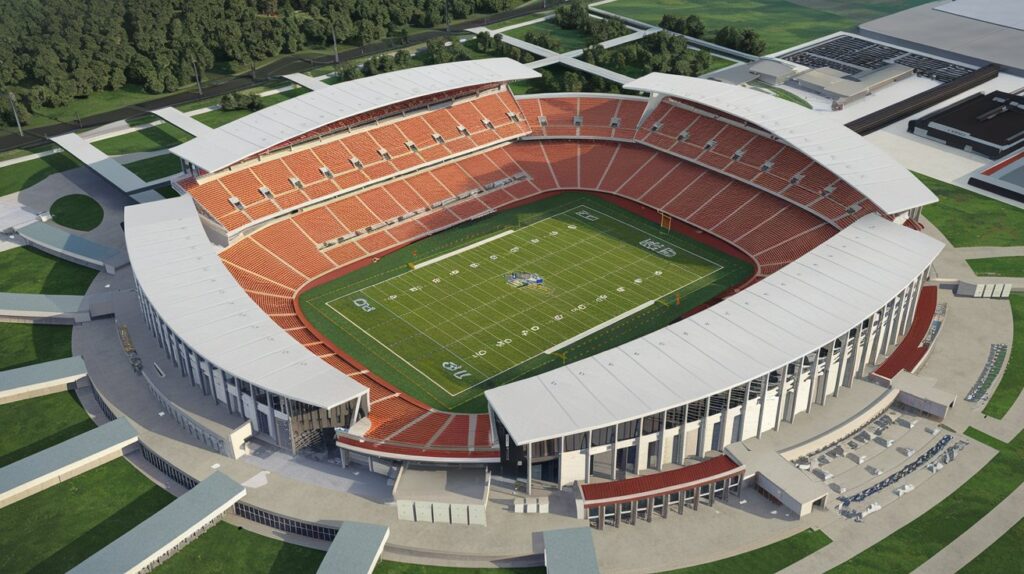
The architecture of modern football stadiums is intricately connected to field dimensions, creating a seamless integration between playing surface and structural design. Stadium architects must consider not only the regulation 120 yards by 53 1/3 yards playing area but also additional space requirements for team areas, media facilities, and spectator amenities.
Key Architectural Considerations:
- Player Facilities: Locker rooms and training areas are typically positioned with direct access to the field, usually through tunnels at field level
- Spectator Sightlines: Stadium seating is designed to provide optimal viewing angles of the entire playing surface
- Media Infrastructure: Dedicated areas for broadcasters, cameras, and press boxes are integrated into the stadium design while maintaining clear sightlines to all field areas
Field Integration Elements:
- Retractable Roofs: Modern stadiums often feature retractable roof systems that protect the field while maintaining the option for open-air play
- Turf Storage Systems: Some venues incorporate innovative sliding field trays that can move the entire playing surface in and out of the stadium
- Multi-Use Adaptability: Design elements that allow the field area to be reconfigured for different events while protecting the playing surface
Support Infrastructure:
- Underground Systems: Complex drainage and heating systems are built beneath the playing surface
- Lighting Arrays: Strategic placement of stadium lighting to eliminate shadows and ensure uniform field illumination
- Ventilation Systems: Air flow management systems that help maintain optimal field conditions regardless of weather
Digital Integration in Field Dimensions
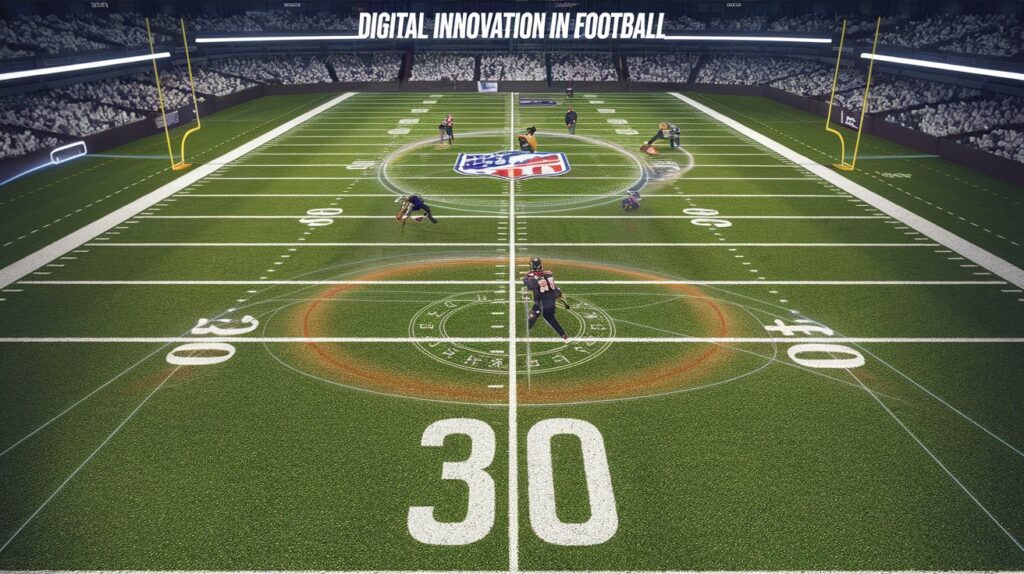
Contemporary football fields increasingly incorporate technology while maintaining traditional dimensions. Virtual first-down lines, visible to television viewers but not physically present on the field, have become standard in broadcasts. These technological additions enhance viewer experience without altering the physical dimensions that govern actual gameplay.
The integration of tracking technology has added new dimensions to how we understand field usage. Teams can now analyze player movements across every yard of the field, leading to more sophisticated play calling and formations. This data-driven approach has revolutionized how teams utilize field space during both practice and games.
Conclusion
Understanding the dimensions of a football field goes far beyond knowing its length and width. Every measurement, from the precise width of yard lines to the depth of end zones, plays a crucial role in shaping how the game is played. These standardized dimensions have helped create a consistent and fair playing environment across all levels of competition.

Frequently Asked Questions
Must Visit : How Big Is A Standard Car Compared To A Bus In Dimension?

John Smith and Kapela Rodriguez, engineering experts and creators of Measured Inches, transform complex measurements into simple, everyday examples. As mechanical and civil engineers, they combine their technical expertise to help readers visualize different units through practical comparisons. Their clear approach has made Measured Inches a trusted resource for understanding measurements.








What’s up to all, the contents present at this web site are really remarkable for people knowledge, well, keep up the nice work fellows.